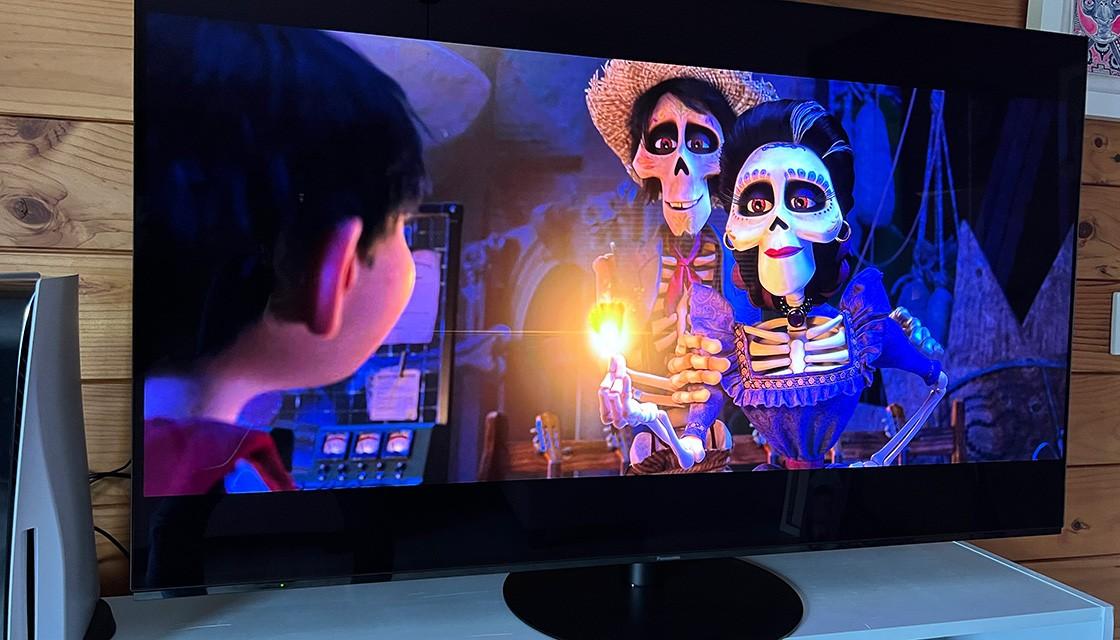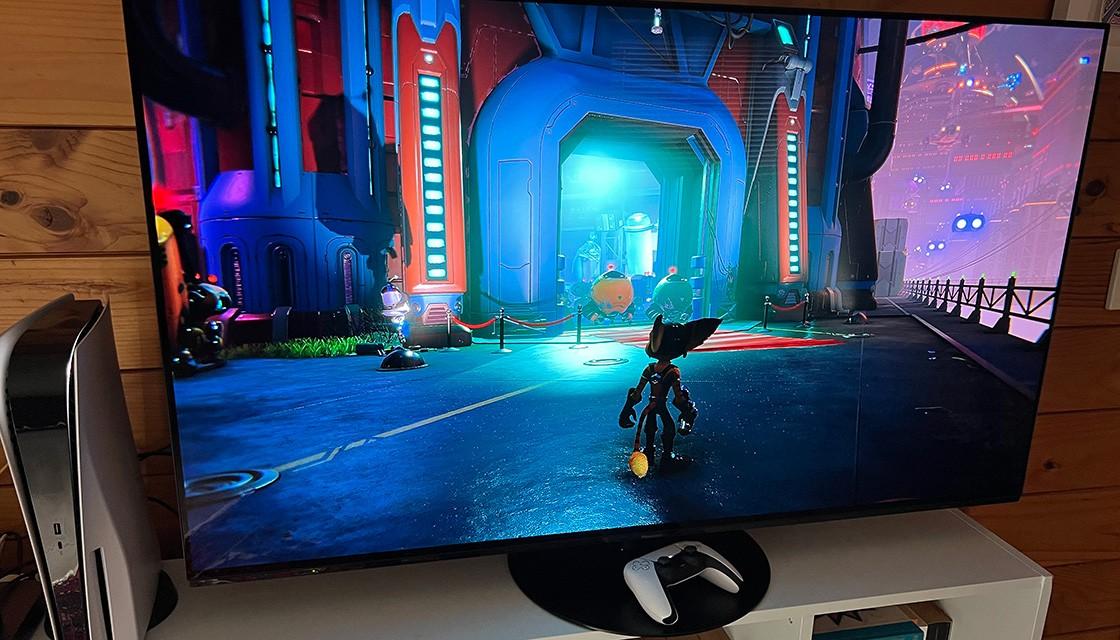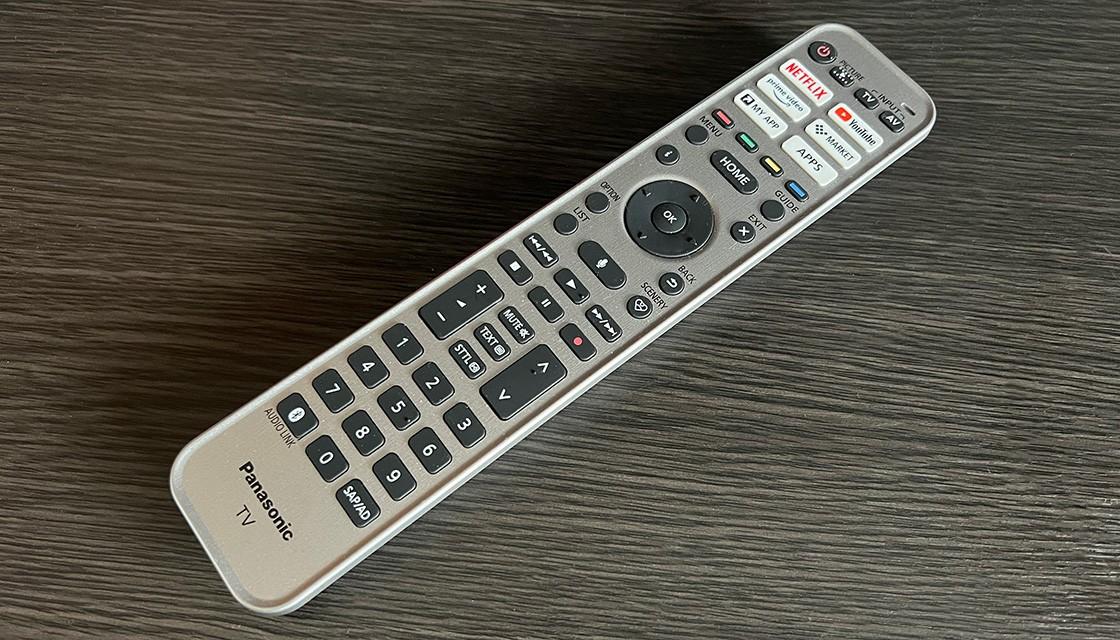
There are very good reasons why one of the two main televisions in my house is a Panasonic and I continue to hold the brand in high regard.
The first is because it delivers terrific value for money, with a performance that could command a higher price.
But I feel you learn more from a company when something goes wrong, and Panasonic excelled compared to others I've dealt with in that regard.
When my television developed a fault after its warranty ran out, I almost kicked it to the curb, literally.
I went and bought a new television and then, at the last second, decided I'd see if I could get the old one repaired and sell it on for a few dollars.
It took the company only a few days to look at it, let me know it considered was at fault and would replace it. Even better, they didn't replace it with the same model, but a brand new one with better specifications.
So when I was offered the chance to try out the latest Panasonic 4K OLED model, I jumped at the opportunity knowing there's a fair chance I could be auditioning it for a future permanent position in the Kilpatrick household.
But with fearsome competition from the likes of Samsung, Sony and LG, how does the Panasonic OLED stack up in 2021?
I've been using the Panasonic JZ1000 55-inch television for a few weeks now and here are my thoughts.
The good
There are times when setting up technology feels like a real chore. Whether it's too many cables, a need for three different screwdrivers and some hex keys, it often takes the fun out of a new gadget.
Not so here. I can't recall the last time something as significant was set up in such a small amount of time.
All it needed was four screws to install the base, putting the batteries in the remote, plugging in my HDMI devices and I was done. There's a real value to simplicity done well and Panasonic knocked it out of the park.
It looks great too, from the small bezels around the screen to the no-nonsense deep black encasing - and with the added bonus of the base being able to swivel the screen to create perfect viewing angles and give easy access to the rear.
A lot of that goodwill would be undone if the performance wasn't up to scratch, however. Thankfully that's not the case.
The picture is simply fantastic.

The JZ1000 supports all HDR (High Dynamic Range) formats including Dolby Vision, HLG, HDR10 and the new HDR10+ Adaptive format. I can say there was never once when I was disappointed by the overall quality of the experience.
The colours are saturated and gorgeous, the blacks were pure black and I fell in love with Pixar's Coco - my quality checker of choice - all over again.
I'm used to changing the picture settings on a regular basis on other televisions, but I just didn't need to do that here. They're suitably helped by Dolby Vision IQ which dynamically adjusts to the changing light in the room.
For the purposes of this review, I also connected the television directly to the internet, something I've vowed never to do so with my permanent televisions again.
The in-built Netflix app is particularly impressive. The TV has a Netflix-calibrated mode designed to ensure you get the best picture from the streaming giant, delivering a highly cinematic experience.
In a head-to-head against Netflix running on other devices, the brightness was noticeably darker, but the overall experience did seem to have something of an edge. If I'd sat a little closer to the screen and someone had thrown some popcorn at me and kept checking their phone, I might have been convinced I was in a cinema.
Connectivity is unlikely to be a problem either, with four HDMI inputs on the rear. Each supports HDMI 2.1, with one eARC compliant port.
There are also three USB slots to go with the ethernet connecter and TV tuner input, with both Wi-Fi and Bluetooth supported if you like less wires. Oh, and a 3.5mm analogue jack if you have wired headphones you can't bear to part with.
Last, but certainly not least, is just how good my PlayStation 5 gaming experience was on this screen.

I booted up Ratchet & Clank: Rift Apart and luxuriated in the low-lag, smooth 4K world, occasionally getting even closer to look at the details in Ratchet's fur and how it moved.
But not quite everything was as impressive as my Lombax mechanic friend.
The bad
On-screen software never bothered me that much until I used Samsung's Tizen-based home screen navigation system.
Since then Panasonic's has seemed a little quaint. Not unusable, by any means, but certainly a little less friendly.
The new My Home Screen 6.0 software on offer here is a step forward, for sure, and I enjoyed being able to access settings with a single button and pinning my favourite apps to the home screen.
But because the vast majority of our TV usage is based on either a computer, an Apple TV or a games console, we often ended up just pressing the AV button at the top of the remote to select the source.
So was the PS5 AV1 or AV2? And which is the Soundbar? And Apple TV is AV4 right?
You get the picture, no pun intended. You can manually name the inputs, but that's a little chore you don't always have with other smart TVs.
As for the remote control? It's huge. I've become so used to smaller, smarter remotes that I did a bit of a double take when I first saw it. It's unquestionably bigger than the remote for my older Panasonic, and that's not what's supposed to happen these days, right?

I did appreciate being able to map an app of my choice to one of the big white buttons at the top of the remote but I ended up wishing it was just a bit simpler. And much smaller.
However, the biggest let down for me was the sound quality.
The built-in speakers and audio processing system offers Dolby Atmos technology but it just wasn't as good as I hoped it would be, even with trying out the different settings.
Part of that may be because I'm so used to using a soundbar that anything that doesn't cause my floor to shake is going to disappoint. It probably wasn't helped, either, by the large open-plan nature of the room.
It just lacked the 'oomph' I really wanted from a high-end television.
With my soundbar plugged in? The overall experience was fantastic, so if you've already got an external sound system then you have no cause for concern.
The verdict
One of my other passions in life is sport, so forgive me for using a football analogy here.
Very good teams tend to have a standout player or two, those that grab the headlines and attract all the attention, whether they perform or not.
The best football teams have those stars, but standing near them is someone else who is probably more important: The player who delivers week after week and can be relied upon to always give their all.
They might not be the favourite for many fans, they might not get all the glory in the end of year awards ceremony - but those who understand the game truly appreciate the role they play.

I see Panasonic and its JZ1000 offering a similar, flying beneath the radar-type performance here.
I really could not be more happy with how the television looked and operated yet I suspect a lot of people may be inclined to look at flashier televisions, software and remotes and be attracted by the dazzle. Don't be.
Like any Premier League player, the JZ1000 isn't cheap - the 55-inch model sells for around $3229 in Aotearoa - but it still offers a value for money that makes this a coveted purchase.
If I was looking for a new television today, there's no question this would be on my shortlist, and with a very strong chance of being at the top.
Newshub was supplied with a Panasonic JZ1000 55-inch 4K OLED television for this review.


